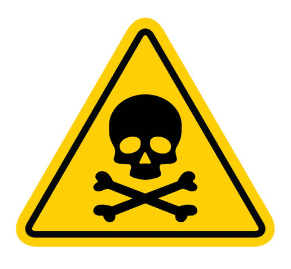
Leading Causes of Accidental Dog and Cat Injury and Death
In and Around the Home
I lied. There are over 200 items listed below, but I didn’t want you to feel overwhelmed. The following household items have the potential to cause serious illness, or even death, depending on the amount eaten by your cat or dog. Keep these items in a safe location, out of your pet’s reach.
HARMFUL FOODS
[one_half]
Alcoholic beverages
Avocados
Caffeine found in coffee, tea, energy drinks
Chocolate
Fatty foods
Garlic
Grapes
Macadamia nuts
[/one_half][one_half_last]
Moldy/spoiled foods
Onions & onion powder
Raisins
Raw yeast dough
Salt
Tea leaves
Xylitol (artificial sweetener found in gum and candy)
[/one_half_last]
PLANTS
[one_half]
Aloe
Amaryllis
Andromeda Japonica
Asian Lily
Asparagus fern
Australian Nut
Autumn Crocus
Azalea/Rhodondendron
Belladonna
Bird of Paradise
Bittersweet (American and European)
Black Locust
Branching ivy
Buckeye
Buddhist Pine
Caladium
Calla lily
Castor Bean
Ceriman
Clematis
Cordatum
Corn plant Cycads
Cyclamen
Daffodil
Daylily
Devil’s Ivy
Dieffenbachia
Dumbcane
Easter lily
Elephant ears
Emerald fern
English Ivy
Eucalyptus
Ferns
Fiddle-leaf philodendron
Florida Beauty
Foxglove
Glacier Ivy
Gladiolas
Gold dust dracaena
Golden Pothos
Heavenly bamboo
[/one_half][one_half_last]
Honeysuckle
Hurricane Plant
Hyacinth
Hydrangea
Iris
Jerusalem Cherry
Jimson Weed
Kalanchoe
Lantana
Lilies (all Lilium species)
Lily of the Valley
Lupine
Marble Queen
Morning Glory
Mother-in-Law
Mountain Laurel
Narcissus
Needlepoint Ivy
Nephthysis
Nightshade
Oleander
Panda
Peace Lily
Peach, plum, cherry, apricot (seeds, leaves, stems)
Philodendron
Poison Hemlock
Precatory Bean (rosary pea)
Privet
Red Emerald
Rhododendron
Ribbon plant
Sago Palm
Satin Pothos
Schefflera
Striped Dracaena
Sweetheart Ivy
Tulip/Narcissus bulbs
Water Hemlock
Wisteria
Yew
Yucca
[/one_half_last]
Click for a searchable database of Common Poisonous Plants
HOUSEHOLD STUFF
[one_half]
Acetaminophen
Anti-cancer drugs
Antidepressants
Antifreeze/Coolant
Balls (especially small ones or that have a smooth outer coating)
Batteries
Bleach
Bread twist ties
Buttons
Cocoa bean shell mulch fertilizer
Coins
Cold and flu medications
Compost (if it’s moldy)
Cotton swabs
De-icing salts
Detergents
Diet pills
Disinfectants
Drain cleaners
Fabric softener
Flea and tick products not vet-approved for dogs or cats
Fly bait
Gasoline
Glass
Hairpins
Home insect products
Jewelry
[/one_half][one_half_last]
Lead
Lighter fluid
Lime/scale remover
Liquid potpourri
Mothballs
Motor oil
Nicotine
Non-steroidal anti-inflammatory medications (ibuprofen, aspirin, etc.)
Nylons
Oven cleaner sprays
Paper clips
Pesticides
Plastic wrap
Presciption & over-the-counter meds
Rat and mouse bait
Ribbons
Rubber-bands
Sharp objects (knives, razors, scissors, nails, needles, etc.)
Slug and snail bait
Socks (choking hazard)
Solvents (paint thinners, etc.)
String/yarn/dental floss
Tobacco products
Towels
Vitamins
Wax
[/one_half_last]
For a more complete list of Common Poisons & Hazards click here.
SPECIFIC TO HOLIDAYS
[one_half]
Christmas
Tinsel, small toys, chocolate, xylitol, small Christmas ornaments, holiday plants, ribbons, decoration hooks, styrofoam
New Years’s
Confetti, balloons, alcohol, load noises (see 4th July)
Valentine’s Day
Flowers: See PLANTS above
Easter
Fake grass, small toys, chocolate, xylitol
[/one_half][one_half_last]
4th of July
Fireworks: Not only can they cause injury, but they can scare your dog and cause them to run off.
Halloween
chocolate, xylitol, candles, mean kids pulling cruel pranks
Thanksgiving
Bones, artificial sweeteners and some nuts in baked goods, hot containers
[/one_half_last]
Along with these lists, I keep this number:
Poison Control Hotline
888-426-4435, Toll-Free Number.
It is staffed 24 hours a day, 365 days a year.
There is a consult fee of $60, payable by credit card. This includes follow-up consultation (they provide a special number) with you or your vet throughout the case.
You will need to have the following information ready:
- Species, breed, age, sex, weight and number of animals involved
- Symptoms
- Substance (if known), the amount and the time since ingestion or exposure
- Product packaging for reference
If your animal is having seizures, losing consciousness, is unconscious or is having trouble breathing, call ahead and take him or her immediately to your vet or to an emergency vet clinic. Take any product packaging with you.
Keep emergency numbers at the ready: your vet, emergency vet and the poison control hotline. Keep directions to your vet and emergency vet in an accessible place, and remember to leave information for pet sitters.
Here are more worthwhile tips and information from Animal Poison Control.
Animal Poison Control First Aid Kit Recommendations
- Fresh bottle of hydrogen peroxide, 3% (to induce vomiting)
- Turkey baster, bulb syringe or large medicine syringe (to give peroxide)
- Saline eye solution
- Artificial tear gel
- Mild grease-cutting dish-washing liquid (bathing after skin contamination)
- Forceps (stinger removal)
- Muzzle (to protect against fear or excitement-induced biting)
- Can of favorite wet food
- Pet carrier
Web Resources from Animal Poison Control
- What To Do If Your Pet Is Poisoned
- Poison Control FAQ
- ASPCA Poisonous Household Products
- People Foods To Avoid Feeding Your Pets
- Top Pet Poisons
- Toxic & Non-Toxic Plants (searchable database)

Related Posts: